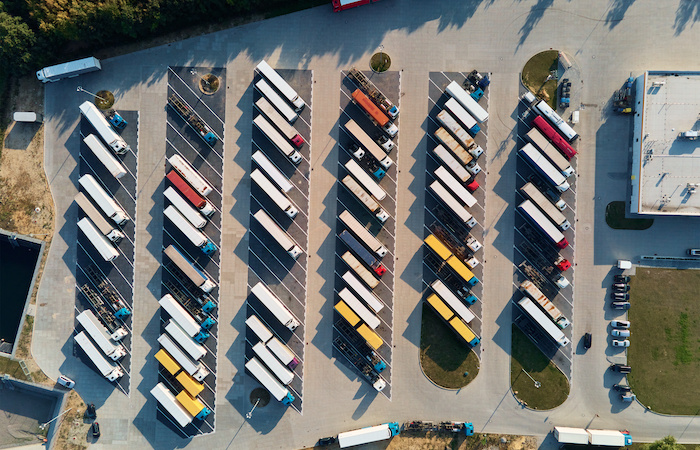Truck parking shortages have become a serious operational and regulatory challenge across Europe. From busy logistics hubs to long-haul motorway corridors, rest areas are often fully occupied by late afternoon—leaving incoming drivers with few safe or legal options.
This is far from a fringe issue. It affects thousands of drivers and logistics operators every day, disrupting schedules, increasing risk, and putting pressure on an already strained transport ecosystem.
Lack of Parking is Undermining Road Safety and Driver Welfare
The core of the problem is simple: there aren’t enough dedicated parking spaces for trucks. EU regulations require drivers to take regular breaks, but when rest areas are full, drivers are caught in an impossible situation. They must either violate parking rules or risk breaching mandatory rest-period laws. In both cases, safety is compromised—either for the driver, the cargo, or other road users.
EU Studies Confirm the Scale of the Problem
In a new EU study (MOVE/C1/SER/2023/138) finalised in 2025, researchers found that Europe faces a critical and persistent shortage of secure truck parking areas (SSPAs). With a shortfall of over 390,000 secure truck parking spaces—projected to reach 483,000 by 2040. The report also identified three main areas of concern:
- Cargo theft: 85% of operators report incidents of theft or vandalism when vehicles are parked in unsecured areas. Common types of theft include fuel siphoning, cabin break-ins, and in some cases, violent assaults—posing severe threats to both cargo and driver saftey.
- Workforce Challenges: Inadequate rest facilities continue to impact driver wellbeing, contributing to fatigue, elevated stress levels, and a decline in road safety. Female drivers are particularly affected by the lack of personal safety measures and proper hygiene amenities, which are still missing in many locations. These poor working conditions not only affect the daily experience of drivers but also make it more difficult for the industry to recruit and retain talent—further deepening the existing driver shortage.
- Technology and Data Deficiencies: Many parking facilities still lack the digital infrastructure needed to support modern reservation systems and connectivity tools. Without reliable access to real-time data, both drivers and dispatchers face significant challenges in planning routes and rest periods efficiently—often leading to missed opportunities, delays, or regulatory breaches.
The Real Cost for Fleet Operators
Drivers lose valuable time searching for available parking, leading to wasted hours, higher fuel consumption, and missed delivery windows. In an industry where margins are tight and timing is critical, this inefficiency ripples through the entire logistics chain—undermining both performance and profitability.
Another issue complicating the picture is the unequal enforcement of parking fines. Domestic drivers are held fully accountable, with unpaid fines pursued by national debt collection agencies. Foreign operators, on the other hand, are rarely penalised in practice. This discrepancy undermines fair competition and adds to the frustration of local operators who feel they are disproportionately punished for a systemic infrastructure failure.
Existing Parking Capacity Is Mismanaged and Underutilised
The problem isn’t only about the number of truck spaces—it’s also about how existing parking areas are managed. In many rest areas, large sections are reserved for passenger vehicles, which often remain empty during weekdays. These underutilised spaces could serve as a practical overflow solution for trucks during peak periods. Yet rigid zoning rules prevent this kind of flexible use.
Smart Parking Apps: Helpful, But Not a Cure
To address this growing crisis, several smart parking apps have emerged:
- LKW.app: Offers real-time filters for available parking, including private yards and service data.
- TransParking: Tracks live availability in rest areas across Europe.
- Truck Parking Club: Connects drivers with privately owned spaces near logistics hubs and motorways.
These platforms ease rest planning, but ultimately depend on existing physical availability—which remains a bottleneck in many regions.
Closing the Gap Between Plans and Reality
By integrating live vehicle tracking, tachograph data, parking availability insights, predictive rerouting, and automated compliance logging dispatchers can stay ahead of the curve.
Forecasting where and when drivers will need to stop, align rest plans with real-time parking data, and proactively reroute when availability runs low. This reduces the risk of violations and unsafe stops, eases the administrative burden, and improves driver satisfaction by adding predictability to an otherwise uncertain part of the job. In short, GSFleet Manager give fleet operators the control they need in a landscape where too much still depends on luck.
Summary
Europe’s truck parking shortage is a growing crisis with real consequences—legal risks, lost productivity, and rising driver stress. While infrastructure lags behind, digital tools offer fleet operators a way forward.
By combining real-time tracking, compliance data, and parking availability, fleet managers can reduce uncertainty, improve planning, and protect both drivers and operations.
